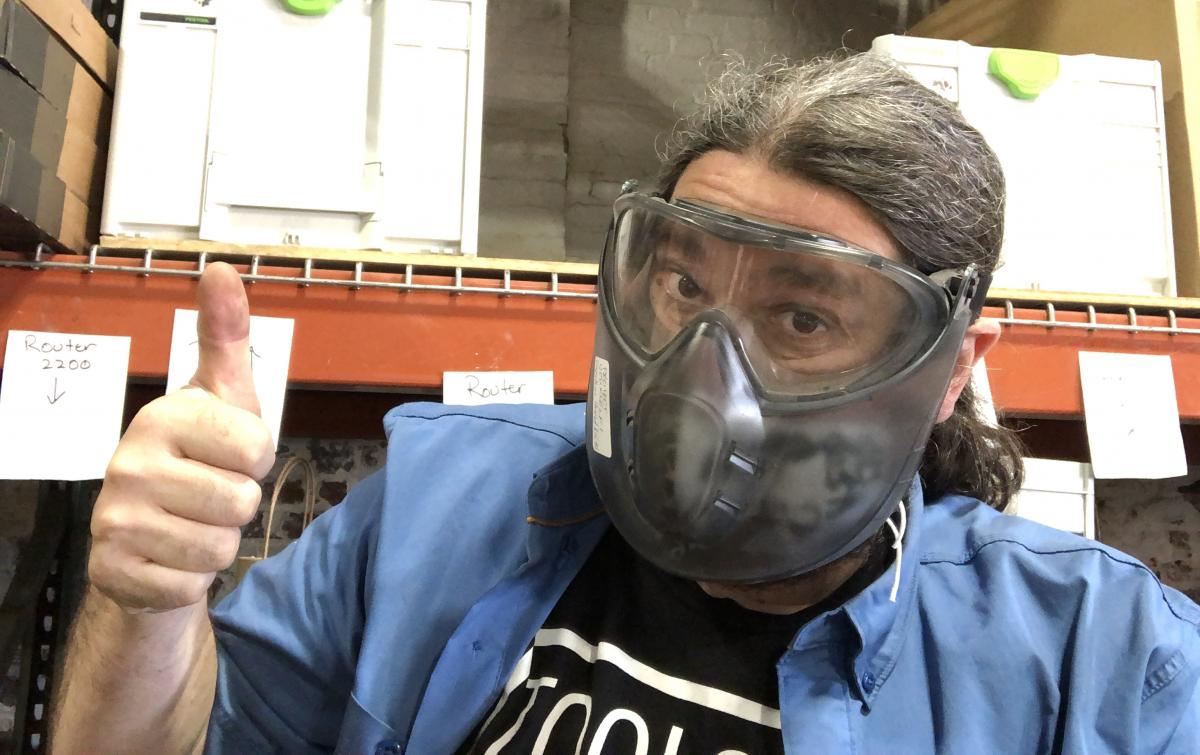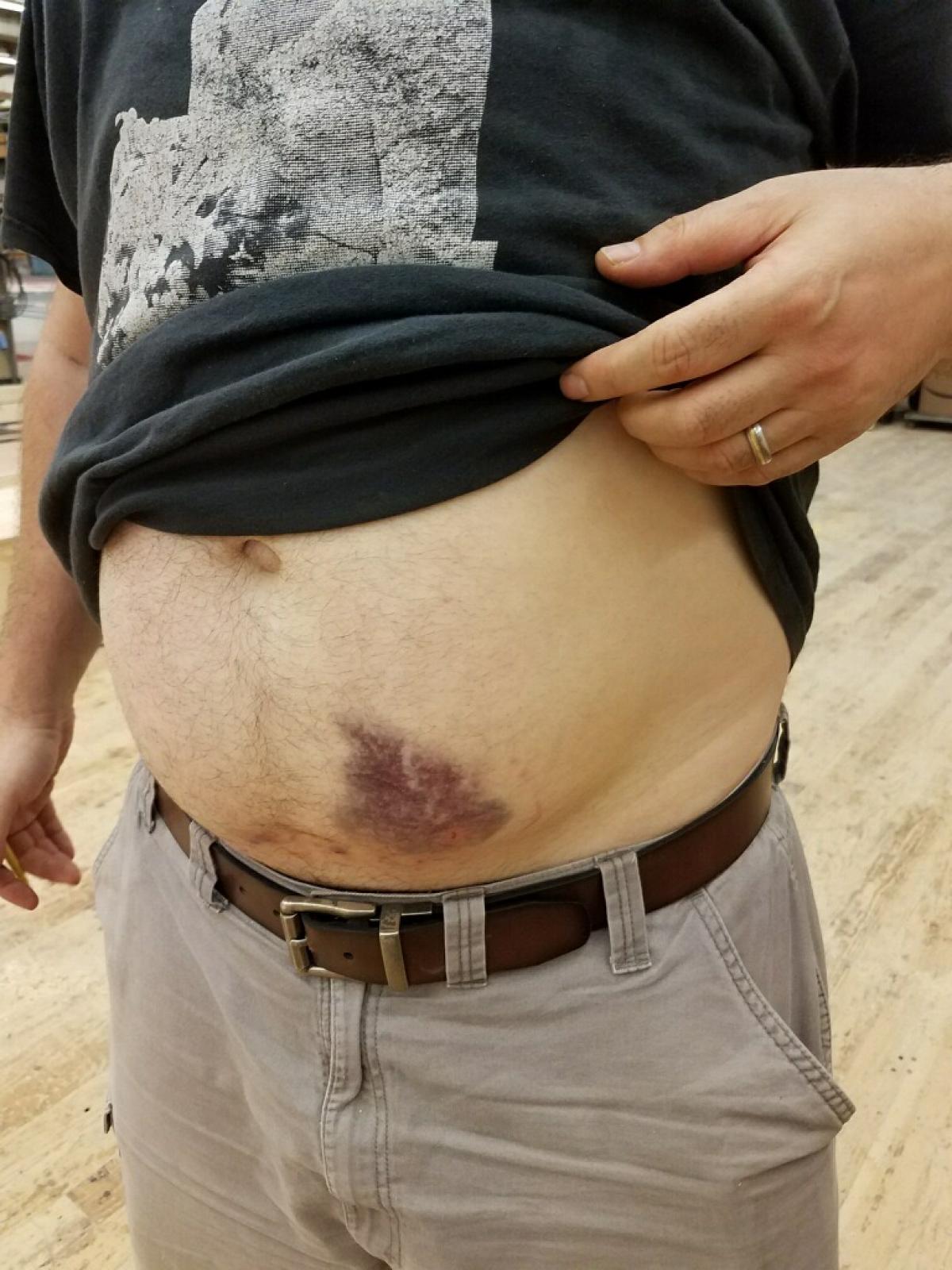
Recently I was working with a customer who was new to spoon carving. In a truly majestic example of irony, sigh, as I was showing them how to safely use a crook knife, I wound up cutting myself with one of the tools while putting it away. I was talking to the customer and lost focus for that critical split second. Major props to this customer (let’s call him "J") who was concerned for me but held it together well in spite of my bleeding somewhat profusely, (as fingers and the face have blood vessels close to the skin and tend to bleed more!) Much appreciated J, and I hope your first few spoons come out great.
I was ready to share the first in a series of posts about carving spoons today, but I have been thinking a lot about safety lately and decided to share this first. Whatever your political or non-political bent, we are arguably living in a unique time in regard to safety, at least here in the U.S. Depending on who you are and what resources you have at your disposal, you are likely looking for more safety these days. Whether COVID19, systemic racism and violence, natural disasters, or any one of the other things going on right now, there is a lot that keeps us from not focusing on what we are doing in general and in our shops specifically. Not a great recipe for safety.
For some of us working with wood is an escape from the chaos, while for others it is how we make a living and have multiple projects stacked up (these, of course, are not mutually exclusive). In these trying times, I wanted to share some reminders on how to do what we do as safely as possible - equally important for beginners and old pros alike. Please share your #1 safety tips or close call stories and lessons learned in the comments, or email them to me at joe@toolsforworkingwood.com.
Below are a few thoughts from some great woodworkers I know to get us started, and to begin, one relating to the lesson I certainly learned last week.
So. Take a breath, focus on what you’re doing, and stay safe all!
I am usually loath to share pics of myself (see below), but this was an important lesson on keeping focus on a table saw, especially a large saw when cutting up a full sheet of ¾” plywood. Hurt like hell but could have been much, much worse. Sorry if it is NSFW.
Joe S
With thanks to Eddie O’Donnell (former Tools for Working Wood employee extraordinaire) and Jonathan Grove (a Mennonite 6th generation woodworker from Appalachia and one of the best feminist activists I have ever worked with) for helping pull these together.
---
- "I think my advice is to be focused and fully present when using tools and remember that saving a few minutes could cost you a lot for life. It’ll improve the quality of your work and help keep you safe."
- "I know you shouldn’t preach to the choir, but the choir also needs practice. That’s how they stay so good! So don’t forget eye protection, an absolute must. And ear protection - for loud tools yes, but also because it will help with focus."
- "Once when using a chainsaw to mill lumber, so much extra fabric from the leg of my jeans was flowing out past the edge of the chainsaw chaps, that in a moment of mis-footing on some uneven ground, the chainsaw bar came very close to my leg and began to cut the cuff of the Jean. Luckily I noticed this and quickly stopped. The chaps are there to protect my legs, but all that extra fabric from the jeans found its way out and could have possibly bypassed the safety provided from the chaps and sucked my leg into the saw via Jean cuff. The solution? Yes, you could spend more time tucking things in and every time it comes loose, tuck it in again and continue to be conscious and troubleshoot... or just buy clothes that fit a little better and closer to the body. The point is to get clothes that are comfy to move in but don’t produce a hazard (this includes: poorly rolled up sleeves and the like as well). I like slightly stretchy fabrics, and for pants, a leg cut that only leaves about two to three fingers of fabric around my boots, at the most."
- "I’ve got some stories, near miss with a big framing nail gun, another guy’s jeans-only circular saw cut framing a wall, and a mentor’s story with a joiner, but thankfully I don’t have any major ones about myself. I’ve done some sketchy things but not very - and I’ve probably been lucky too.
That is beyond the basics that sometimes get skipped for time: 1. Always unplug a tool before working on it. 2. Keep guards in place, 3. Relief cuts are worth the time."
- "What used to be (still is ?) under-appreciated is the danger of dust... a shop vac at minimum is a necessary dust mitigation strategy-especially in a closed space, and not a bad idea outside, both for breathing, slip/trip/falls, and fire hazards."
- "Treat using a saw like rewiring a “live” outlet or switch (while the power is on) or making adjustments on a loaded gun. know exactly where the danger is and mitigate it; meaning know the path of the blade, that nothing can move and bind/kick, use wood to get close to a moving blade rather than your body. Climbers have rules about redundant systems to “protect” a fall - good advice here too."
- "A good simple push stick. People put a little too much value in nice push sticks. I find for most operations a simple plus stick out of a wedge of 2x12 is about as safe as it gets, while being comfortable, convenient and most importantly, replaceable. It provides adequate clearance from the blade while also providing downforce forward of your hand, keeping the board from picking up at the far side of the table saw blade. And since it’s just 2x12, if you’re cutting something thin, just through it and make a bunch of them. Keep a few by the table saw in convenient places, so they’re always easy to reach and make a bunch of spares for the future."

|
 Joel's Blog
Joel's Blog Built-It Blog
Built-It Blog Video Roundup
Video Roundup Classes & Events
Classes & Events Work Magazine
Work Magazine




—Always mentally draw a line from the edge of your blade—whether knife or axe or saw—and make sure no body parts cross that line. Remind yourself to tuck those fingers in, adjust your grip, etc.
—When you're axing out a spoon blank, keep your blank anchored at the center of your block or even farther back, and keep your dominant angled leg back.
—Stay sharp! Just like in the kitchen, you're far more likely to hurt yourself with a dull tool than a super sharp one.
Having said that, my last "big" injury happened to me at a TFWW woodcarving class—after class, actually. I was getting in my car with my chisel roll when the big 1" chisel slid out of the roll and right across my fingertip. Thankfully, Joel had some emergency supplies on hand!
Jeff K - thanks for the tips and way to bring the story home! Glad it worked out ok.
Mike - thanks fr the (thankfully) close call story. I don't use chisels that often and so never thought of that, especially since I usually walk around barefoot in life in general, though not usually in the shop.
Sean - Looking up the article, thanks. Yeah, even though I knew how powerful a table saw is, I was not prepared for the kickback I got hit with. The piece of plywood shot back, bounced off me and shot clear across the massive shop we were working in. Real moment of truth for me in re to safety.
Remember folks - not safety first, safety always!
Joe S
"This is the bare bones version of a longish story on something I've never seen in print on safety.
Your column pointed out some of the safety items for yourself, but not as it pertains to another person. While one should always be aware of what is going on around you for your own safety, it is never mentioned that people around you should also be aware of safety and dangers around themselves and you.
I was remodeling a house and working on the trim while the guy with me was doing some last minute framing that we had overlooked. We were about 20 some feet away from each other, but the framing gun misfired and shot me in the web of my left hand. Clearly I should have paid attention that he was shooting my way and should have said something. He should have chosen another way to stand so the gun wasn't pointed at me. We were safe to ourselves but not to each other.
As far as safety suggestions here are three. Never wear smooth soled work boots. In dust collection, make sure the floor is also vacuumed to get the fine dust that makes things slippery such as boots. Place an anti-fatigue mat at the working side of large power tools and machines for a better purchase.
Michael Terry"